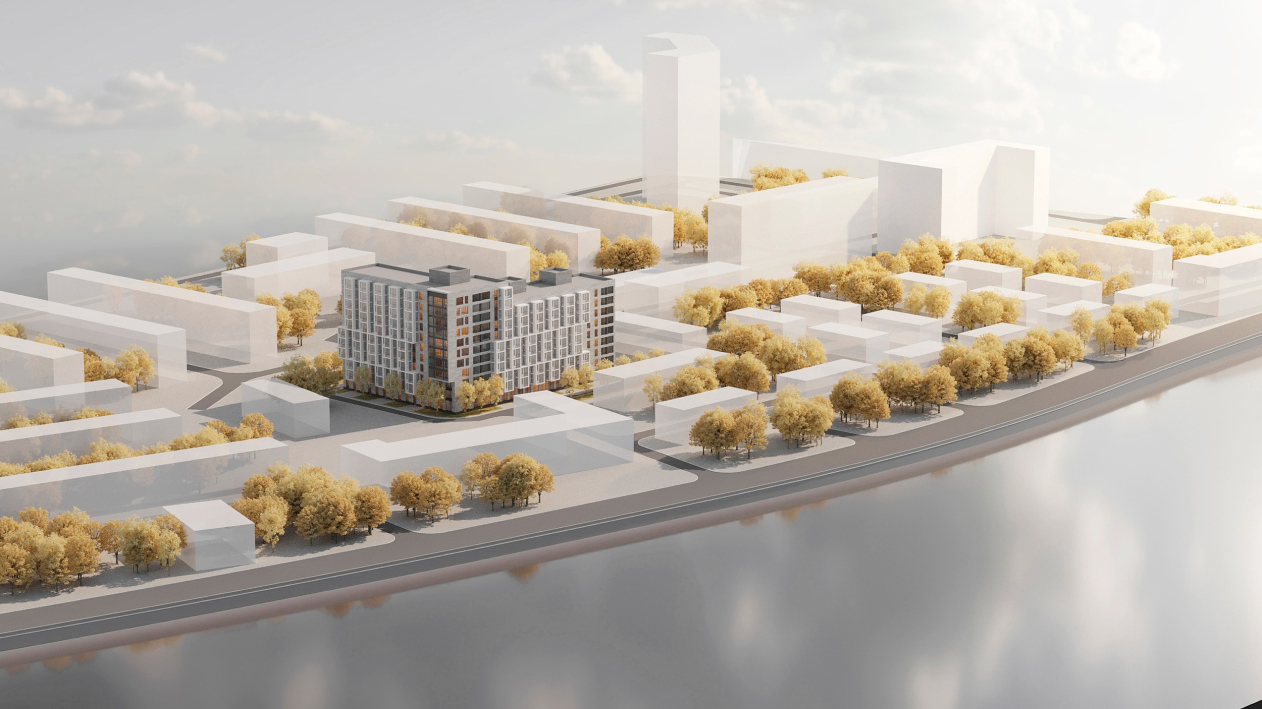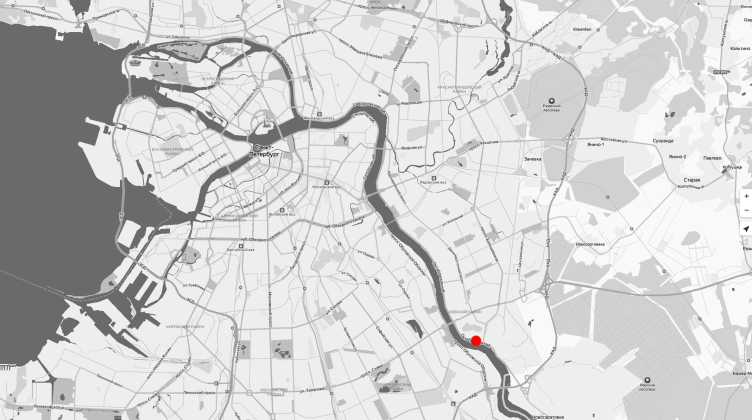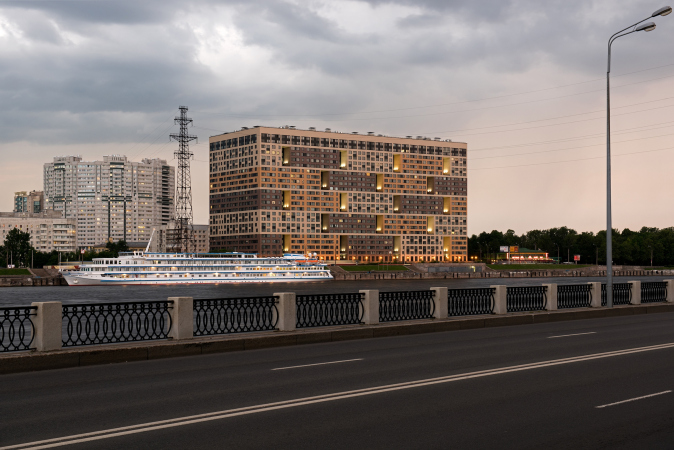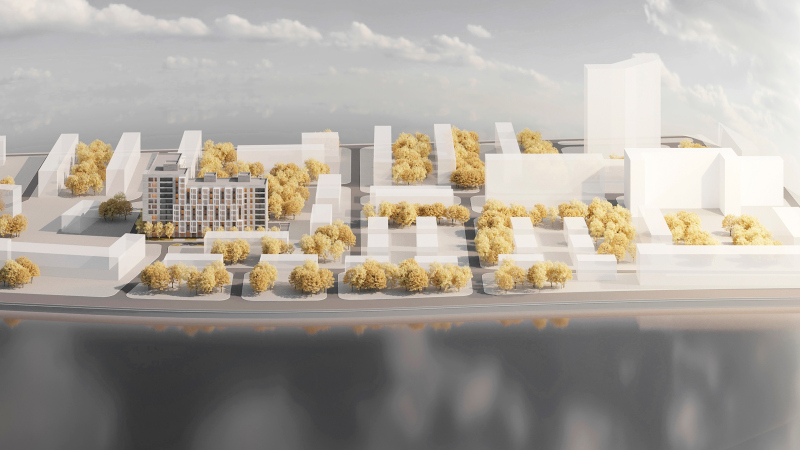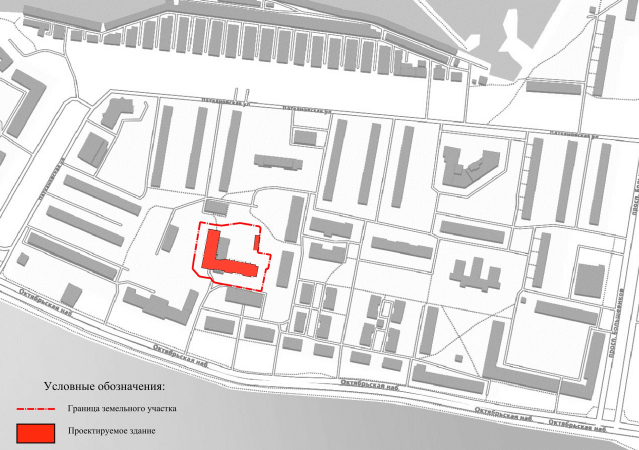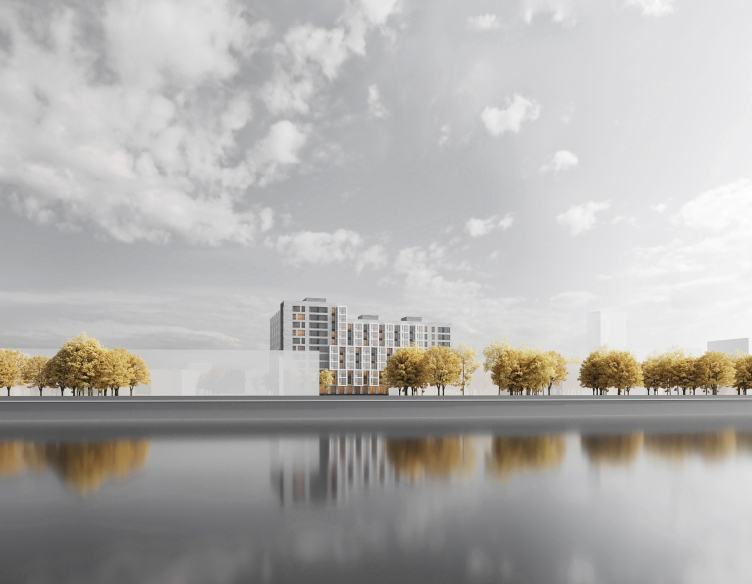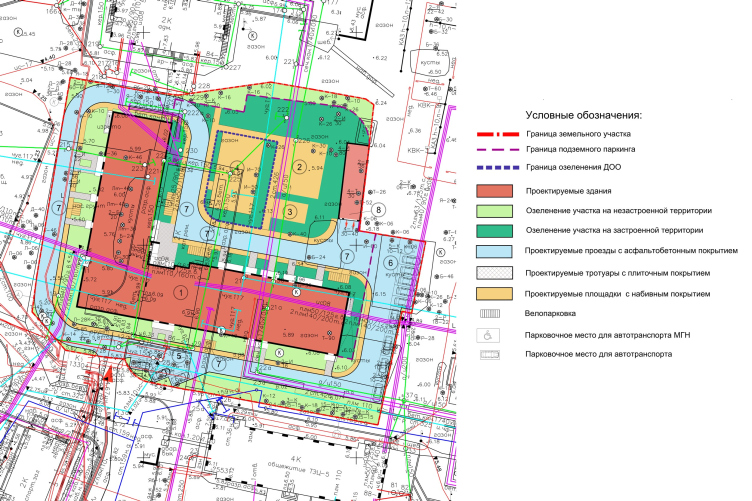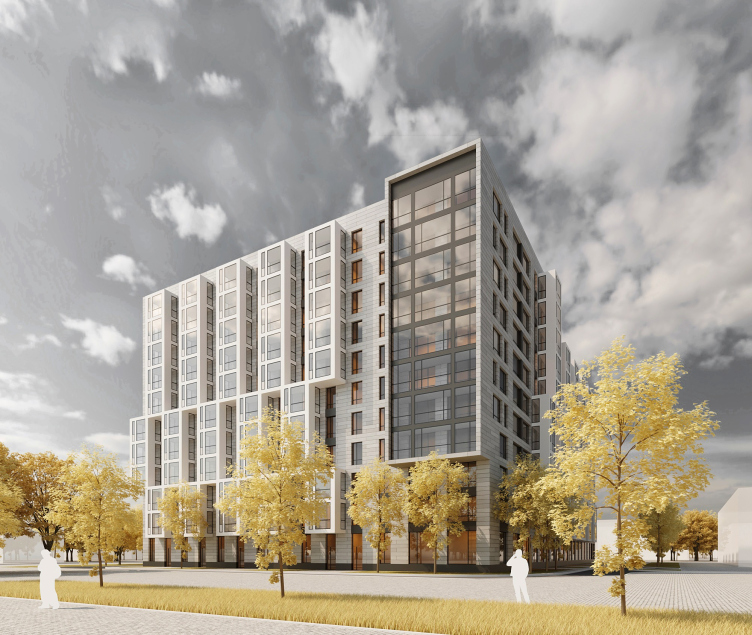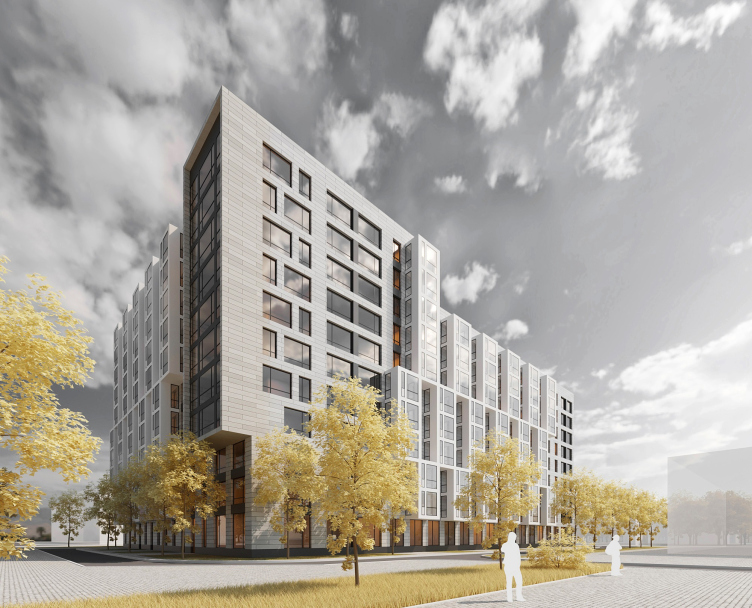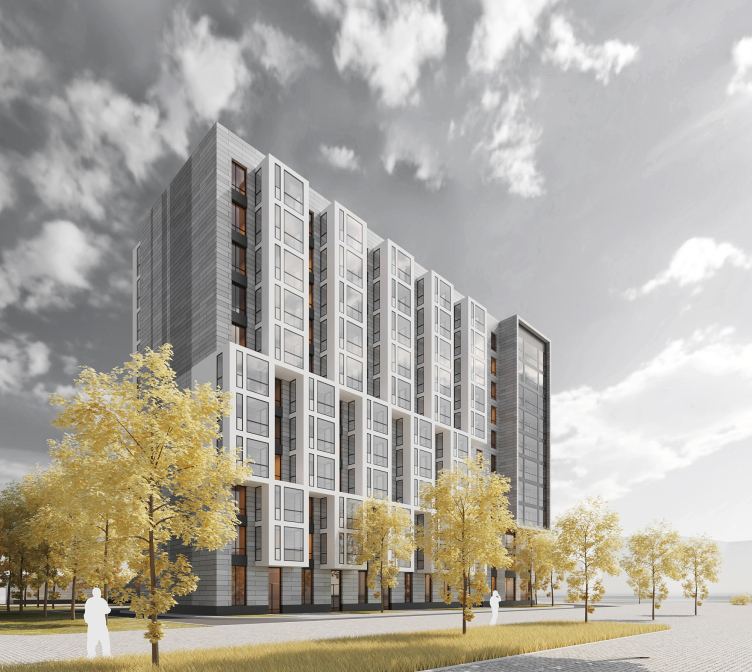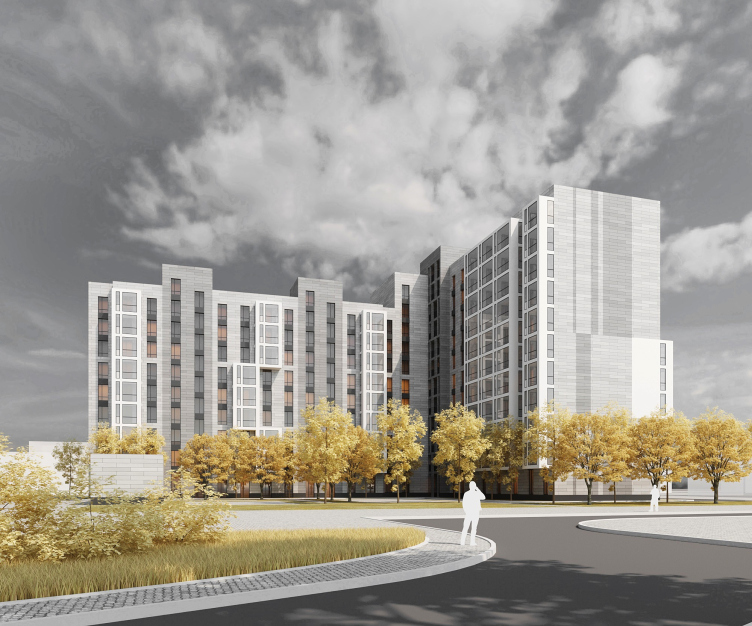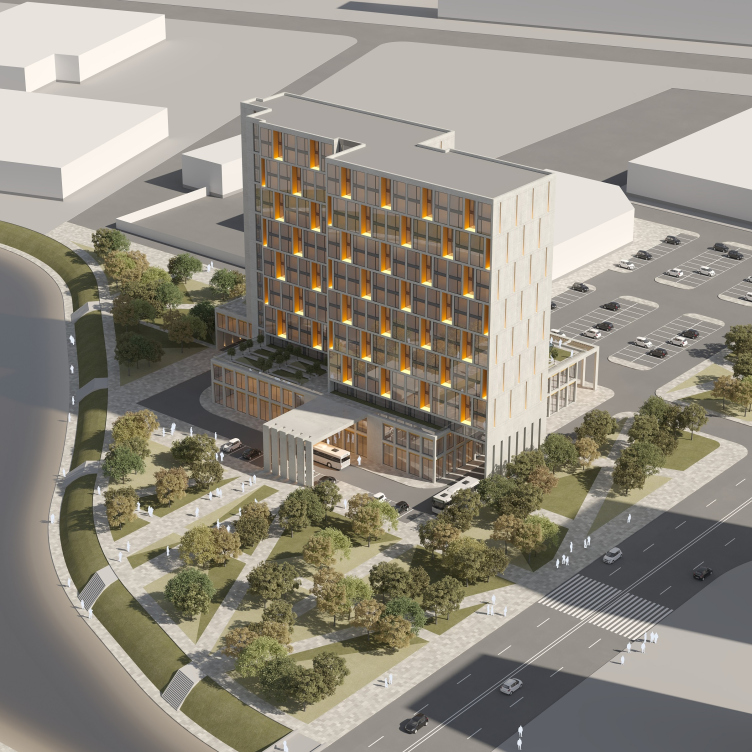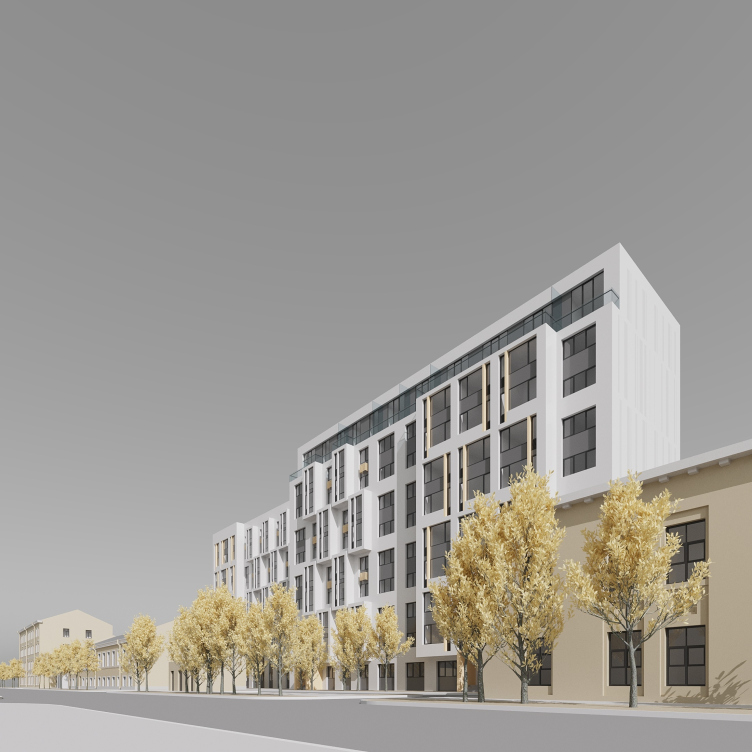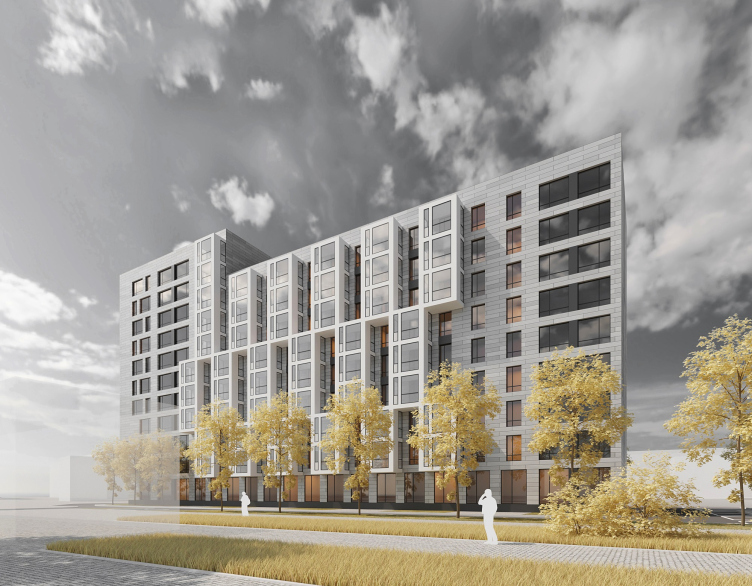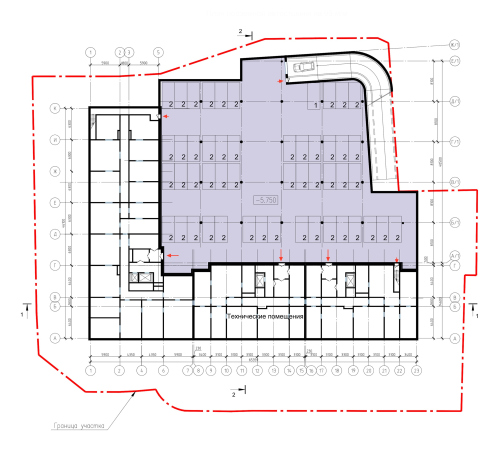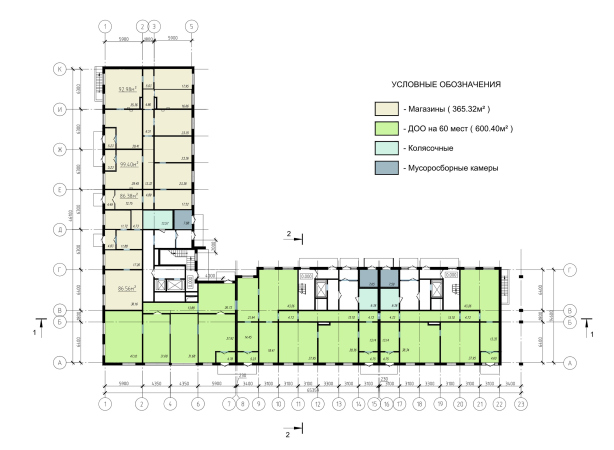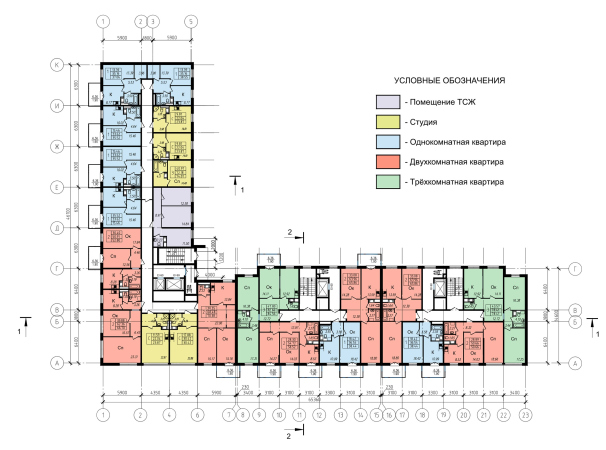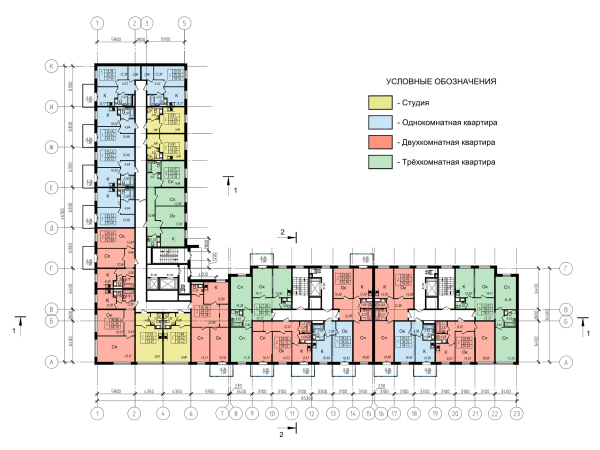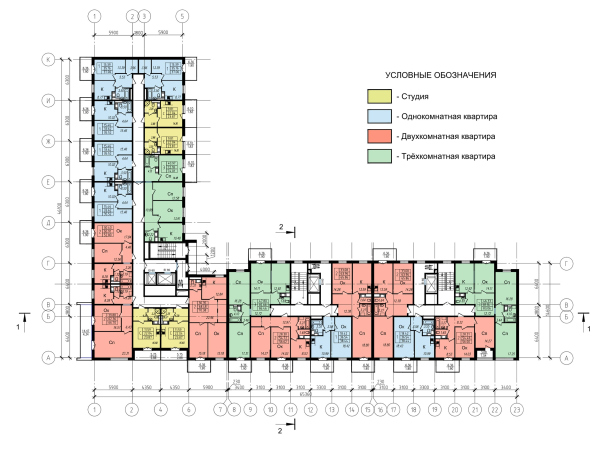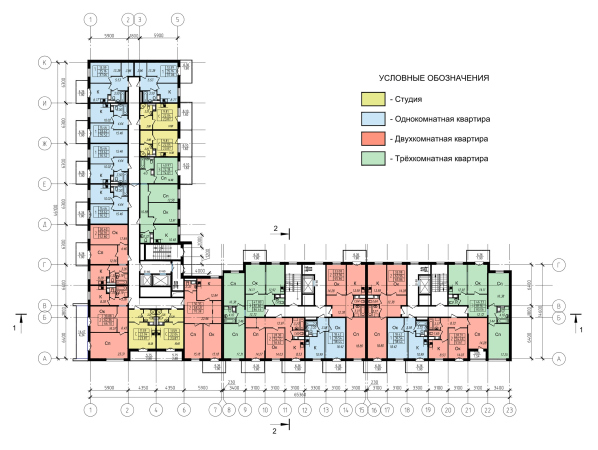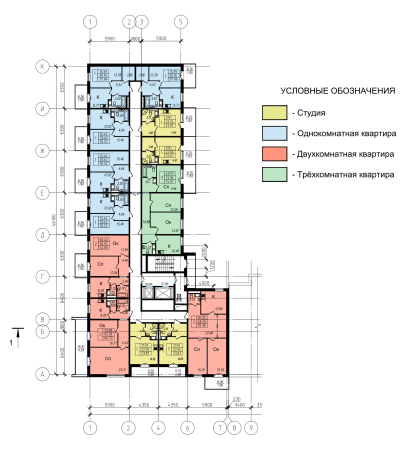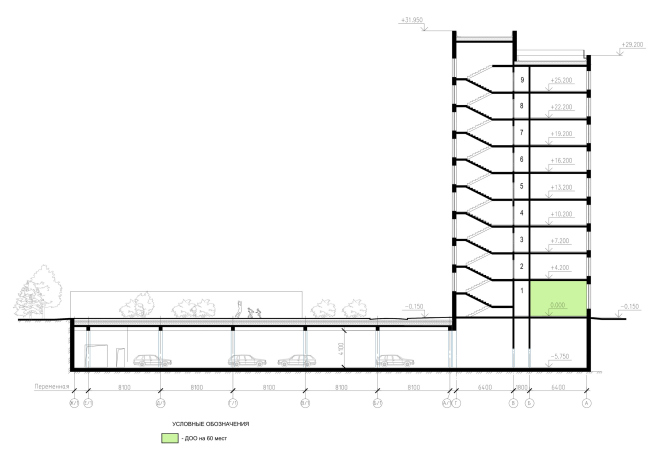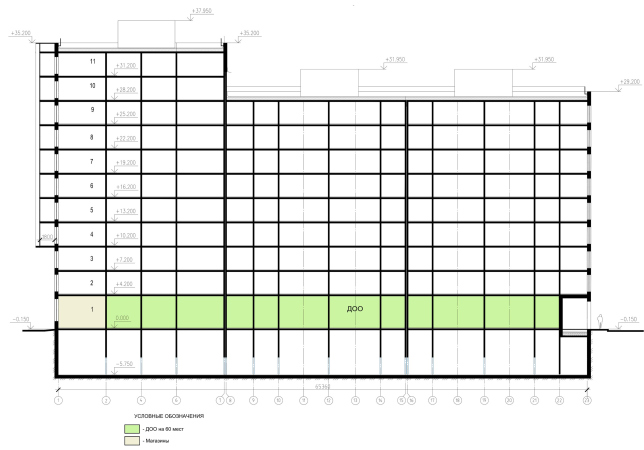The district, where the construction site is situated, opens up on the Oktyabrskaya Embankment – this is the former settlement “Svet Rabochim” (“Light to the Workers”), which was essentially a housing project of the State District Power Plant “Krasniy Oktyabr” (“Red October”), consisting of “German” three-story houses built in the 1920-1930’s, “Khrushchev” houses, and slightly taller “Stalin” buildings.
The housing complex on the Oktyabrskaya Embankment
Copyright: © Anatoly Stolyarchuk Architectural Studio
In this part of the city, the right bank of the Neva River, unlike the left one, filled with residential complexes of megalithic proportions, keeps so far human-friendly scale, and little green streets and yards, not overcrowded with cars. However, this area is also growing denser by degrees. For example, in 2007, a 25-story house was wedged into the city block in question; a little closer to the embankment, the housing complex Veren is being built, designed by Studio 44. As for the house designed by Anatoly Stolyarchuk, it is situated on the third line from the embankment, in the very center of the “little town”. And this location actually presented the main designing challenges.
First of all, the house steps back, yet it will still be quite a highlight, because it is going to be about two or three times higher than the surrounding buildings. Its configuration is the only possible solution under the technical and economic performance conditions and insolation requirements. Two of its sections are turned in the direction of the embankment, and yet another one goes into the depth of the block; together, they form an L-shaped plan that makes it possible to avoid overshadowing the apartments of the neighboring houses. But then again, such positioning corresponds to the latitudinal orientation of the entire area. On a small land plot, the architects were able to place a little yard with playgrounds, and a kindergarten for two groups of children – it occupies the whole first floor of the unit that has windows gazing south — an entrance pavilion for driving into the underground parking garage, and everything else that was included into building code – driveways, setbacks, parking lots, etc.
The housing complex on the Oktyabrskaya Embankment
Copyright: © Anatoly Stolyarchuk Architectural Studio
We are covering this in such great detail because working with land plots that look like an unsolvable equation, became one of the trademark specialties of Anatoly Stolyarchuk Architectural Studio. A similar situation was there with the house on the Prilukskaya Street, a residential complex on the Sofiyskaya Street, and many others. As a rule, the company delivers a pure form, looking at which one does not even suspect what it took to “stretch” this multistory house on a small land plot amidst preexisting environment.
The housing complex on the Oktyabrskaya Embankment
Copyright: © Anatoly Stolyarchuk Architectural Studio
The facade solutions, again, are of the company’s trademark kind – they respond to the context and balance it off with rhythm and proportions, without verbatim quotes or imitations, speaking in the language of modern architecture.
The architects treat the L-shaped volume of the building as a two-layer one: it has a “basis” of the neutral gray tone, walls, covered with tiles of horizontal proportions in two tones, lighter and darker – and the light matter of the glazed stanzas, which consist of white frames and glass. The “basis” behaves in an extremely neutral way, only on the spatial pivot of the corner appears a large modernist cantilever with a “television” stained glass facade that, nonetheless, takes on the role of the house’s main highlight: this way, the house gazes past the river and in the direction of the center of the city.
The housing complex on the Oktyabrskaya Embankment
Copyright: © Anatoly Stolyarchuk Architectural Studio
There is no actual entrance underneath the cantilever, only the side wall of the kindergarten, so this solution is not so much functional as an “image” and “plastique” one, yet still essential in this particular case: it accentuates the corner, specifically for those who drive down the embankment. The “television” stained glass facade is composed of glazed recessed balconies, the same kind that forms the strokes of the large horizontals left and right of the facade that stretches along the embankment.
The housing complex on the Oktyabrskaya Embankment
Copyright: © Anatoly Stolyarchuk Architectural Studio
White recessed balconies also appear in the center, on the elongated facades of the slabs; they are grouped into vertical blocks of threes and fives, and are arranged in a staggered order: this way, the architects, on the one hand, avoid the proverbial “thermometer” effect created by vertical groups of glazed recessed balconies, and, on the other hand, give the facade some expressive plastique of ledges and recessions, which produces a regular play of light and shade, at the same time providing each of the apartments with a full amount of insolation, 6 square meters per apartment on average.
The housing complex on the Oktyabrskaya Embankment
Copyright: © Anatoly Stolyarchuk Architectural Studio
In the yard, where the verticals of the utility lines are plainly seen, the rhythm is more reserved, yet new themes appear – for example, fine mesh of white cells, and the composite character of the building is felt more strongly.
The housing complex on the Oktyabrskaya Embankment
Copyright: © Anatoly Stolyarchuk Architectural Studio
It must be noted that the staggered compositions of recessed balconies become the signature technique of Anatoly Stolyarchuk’s; this is not the first time he works with this theme, and each of his solutions is a little bit different. For example, in the hotel on the Veteranov Avenue, the checkered pattern of the glazed recessed balconies is much denser, but it is diluted by backlights and brass finish. In the house on the Prilukskaya Street, the recessed balconies are accentuated by slim verticals.
The housing complex on the Oktyabrskaya Embankment
Copyright: © Anatoly Stolyarchuk Architectural Studio
3-star mixed-use hotel complex
Copyright: © Anatoly Stolyarchuk Architectural Studio
On the Oktyabrskaya, the balconies have almost a perfectly cubical shape, and are prominently articulated. In addition, the varying height of the stacks allows the house to better respond to the surrounding buildings, “imbibing” their typology.
The housing project on the Prilukskaya Street
Copyright: © Anatoly Stolyarchuk Architectural Studio
Anatoly Stolyarchuk believes that modernizing the old panoramas is inevitable; this process cannot be stopped. And this process also yields certain benefits: the access roads are going to be overhauled, the nearby territory will be organized, and, as was already said, a new kindergarten will appear. There is almost no doubt that this house of a higher class will give this area some extra momentum for development, as well as will set of the already existing high-rises.
A couple of years back, infill development as a positive factor was talked about by the Saint Petersburg office of MLA+: according to estimates, about 77 million dollars’ worth of apartments can be built within the “body” of the city. If this potential is to be used, Saint Petersburg can stay within its boundaries for another ten years. This infill development thing, must be, of course, organized in a smart way: the architects must carefully select and match the new functions, making sure that they correspond to the construction norms and the surrounding context. And in this particular instance we are seeing a fine example of such humane work: a considerate to its context, and doubtlessly well-balanced house, whose height is not much of a drawback, really.
The housing complex on the Oktyabrskaya Embankment
Copyright: © Anatoly Stolyarchuk Architectural Studio

